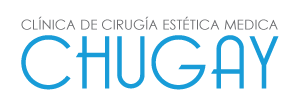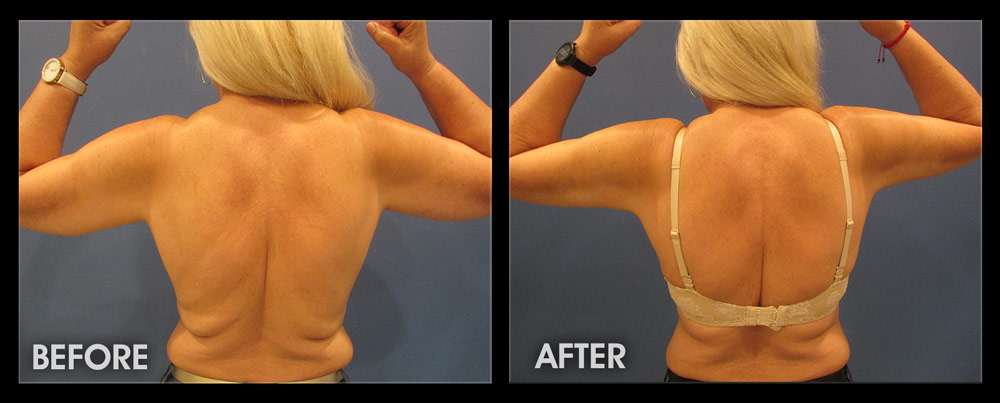Arm Lift (Brachioplasty)
An arm lift, or brachioplasty, is a surgical procedure that reshapes the under portion of the upper arm, from the underarm region to the elbow. This surgery is indicated primarily for those patients who have lost significant weight and have suffered a deflation of their arm or for those who with age have developed sagging skin. Although exercise can sometimes address the muscle tone in the region, however it typically does not address excess skin or skin that has lost its elasticity.
In some patients, simple liposuction may aid with fatty deposits and improve the upper arm contour. However, when there is significant skin involved, an arm lift may be required in conjunction with liposuction to achieve optimal results and deliver an arm that is more aesthetically pleasing and better proportioned to the rest of the patient’s body. This will be discussed with you at the time of your consultation.
NOTE: This is an age-restricted video.
Techniques for Arm Lift and Arm Reduction
When women have excess fatty tissue on the part of the upper arm, which hangs when the arm is raised, liposuction alone can sometimes be done if the skin is not loose. The excess fat is reduced through several tiny incisions in the armpit and near the elbow. The process of reducing the excess fat actually encourages the skin to shrink to a significant extent and to conform to the new arm contour. Sometimes a combination of liposuction and arm reduction is performed.
Arm reduction surgery can be performed at any age, provided the patient is in reasonably good health. Anyone who is planning on losing a significant amount of weight may want to postpone surgery until after they reach their weight goal, since weight loss can affect your result. Those who smoke need to quit at least four to six weeks prior to surgery. The best candidates are those who are mature enough to understand the procedure and have realistic expectations about the results.
There are several types of arm reduction procedures. During your consultation we will determine which type of reduction is best suited for you. Sometimes a mini-arm reduction can be performed. This is done by making a small incision in the armpit region that may extend a short distance onto the inside of the upper arm. Though, most patients after significant weight loss require a full upper arm reduction. This involves an incision in the armpit and an incision that extends along the inner arm from the armpit to the elbow. This type of arm reduction allows for maximum skin tightening.
Is Financing Available?
Yes! Medical Financing is available on approved credit. We accept financing from CareCredit.com. For more information about our Financing options
Recovering from Arm Lift Surgery
Temporary changes in the sensation of the arm skin are normal after surgery, but in some cases can last much longer. We will discuss with you what you can expect as far as skin shrinkage and pigmentation changes. This will depend on your skin tone and quality as well as your preoperative proportions.
The human body is normally asymmetrical. It is not possible to create perfect symmetry in the arms through surgery. We will review what are reasonable expectations as far as symmetry. Swelling after surgery is normal. Most of the swelling should subside in the first couple of weeks after surgery. Infection and bleeding are very uncommon with brachioplasty. Antibiotics are administered during your procedure and a course of antibiotics will be prescribed for your recovery.
Some bruising is normal after surgery. This usually goes away in the first few weeks. For the first week after surgery you will have tape over the incisions. You will also wear a compression garment for several weeks to control swelling and to help your skin shrink and heal to fit your new contour.
Your incisions will be noticeable immediately following surgery but they will gradually fade and flatten for up to a year after surgery. You will also have puckering around the armpit incision after surgery. This will smooth out over a month or two. If your skin has lots of stretch marks or is extremely thin, this is a sign of poor skin elasticity. The presence of poor elasticity may result in widening of your scar. Your skin will also be firm and numb at the outset. It will soften and normal sensation will return gradually.
Things to Look for In your Surgeon:
- Experience: With 2 generations of doctors, over 30,000 procedures and a lifetimes worth of combined experience, Dr. Nikolas V. Chugay and Dr. Paul N. Chugay have not only the required experience in various surgical and non surgical procedures but Nikolas has helped revolutionize the industry, and Paul is following very closely in his father’s footsteps, drawing on over 40 years of experience.
- Compatibility & Respect: Book a consultation with the doctor. Get a feel for how they treat you; whether they listen to you and what you want. It’s important to thoroughly discuss what you’re trying to achieve with your doctor so they have a clear, concise idea of what your goal is but it’s equally important that you respect your doctor’s experience and education enough to listen to their recommendations. You don’t want a doctor that doesn’t care about YOU.
- Specialization: Ask your doctor about other times they’ve performed the procedure you want.
After your Surgery
The recovery is generally one to two weeks after a brachioplasty. You will need to limit your arm movement during the first couple of weeks. It is normal for the arm to feel tight and swollen. The swelling can actually take up to three months to completely subside.
Following your surgery, dressings or bandages will be applied to your incisions, and your arms will be wrapped in an elastic bandage or a compression garment to minimize swelling. A small, thin tube may be temporarily placed under the skin to drain any excess blood or fluid that may collect.
The procedure is performed in our AAAHC outpatient surgery center and you may go home after surgery. We will see you the next day to review after care instructions and ensure that healing is proceeding normally.
Patients are encouraged to light exercise after 14 days. Activities such as walking on a treadmill are acceptable. More vigorous activities such as jogging, aerobics or upper body weights can be resumed approximately four to six weeks after treatment.



